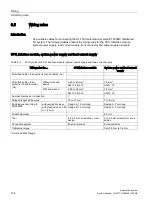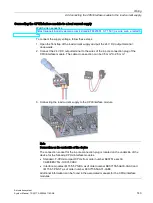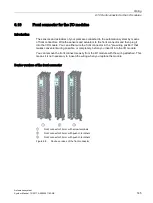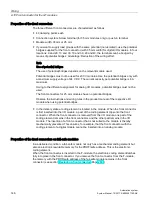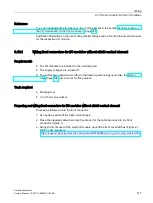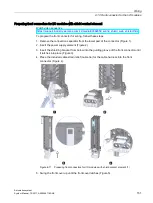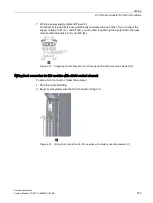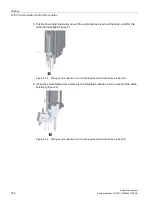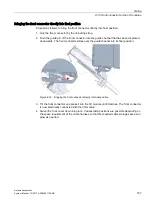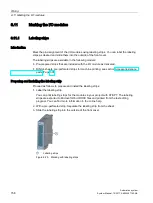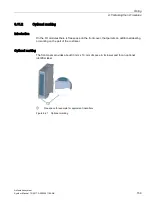
Wiring
6.10 Front connector for the I/O modules
Automation system
146
System Manual, 12/2017, A5E03461182-AE
Properties of the front connectors
The three different front connectors are characterized as follows:
●
40 clamping points each
●
Connection system: Screw terminal (for 35 mm modules only) or push-in terminal
●
Module width: 35 mm or 25 mm
●
If you want to supply load groups with the same potential (non-isolated), use the potential
bridges supplied for the front connector (with 35 mm width) for digital I/O modules. In four
locations: 9 and 29, 10 and 30, 19 and 39, 20 and 40, the terminals can be bridged by
means of potential bridges. Advantage: Reduction of the wiring effort.
Note
Use of potential bridges
The use of potential bridges depends on the relevant module used.
Potential bridges must not be used for 230 V modules. Use the potential bridges only with
a maximum supply voltage of 24 V DC. The current capacity per potential bridge is 8 A
maximum.
Owing to the different assignment for analog I/O modules, potential bridges must not be
used.
The front connectors for 25 mm modules have no potential bridges.
Observe the instructions and wiring rules in the product manual of the respective I/O
module when using potential bridges.
●
In the delivery state a coding element is located in the module. When the front connector
is first inserted into the I/O module, a part of the coding element clips onto the front
connector. When the front connector is removed from the I/O module, one part of the
coding element remains in the front connector, and the other part remains in the I/O
module. The insertion of a front connector that is not suited to the module is thereby
mechanically prevented. This ensures, for example, that the front connector with the
coding element of a digital module cannot be inserted into an analog module.
Properties of the front connectors on fail-safe modules
In as-delivered condition, a fail-safe module not only has a mechanical coding element but
also an electronic rewritable memory for the PROFIsafe address. This is the electronic
coding element.
When the front connector is inserted in the F-module, the electronic coding element latches
fully into place in the front connector. If you remove the front connector from the F-module,
the memory with the PROFIsafe address of the fail-safe module remains in the front
connector (see section Replacing a front connector (Page 283)).
Summary of Contents for Simatic S7-1500/ET 200MP
Page 1: ......



